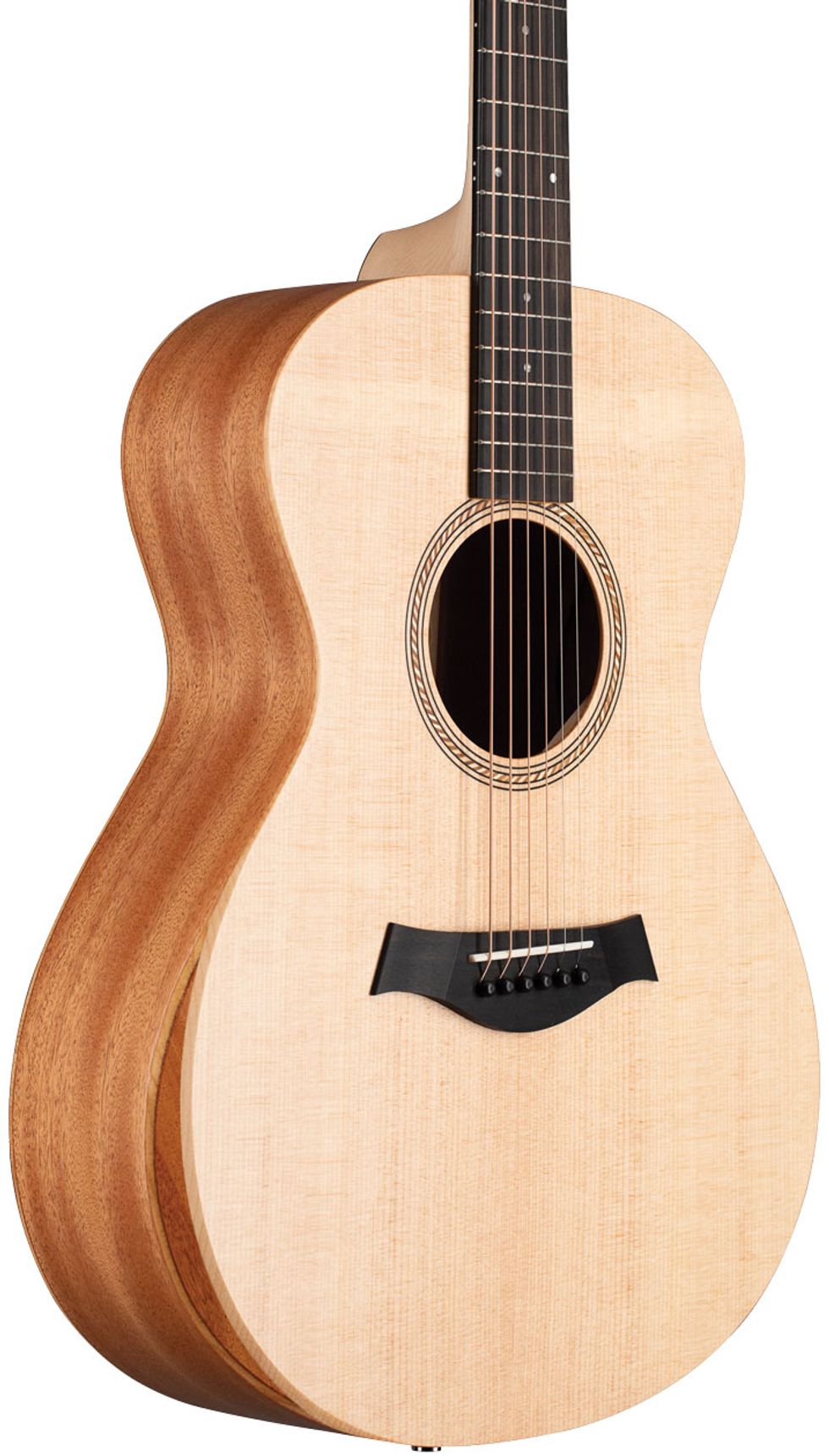Some of us who have been around the acoustic guitar scene for decades remember when special features like arm bevels and soundports on the side of a guitar were only seen on instruments from independent luthiers. And that meant high price tags. The arm bevel served a real purpose as it helped lessen discomfort where the player’s arm goes over the edge between the guitar’s side and its top. In the hands of Toronto luthier Grit Laskin—who first introduced the bevel 1989—it was also a decorative showcase of fine woodworking. The arm bevel was slow to catch on, but it began to be featured on more guitars by the mid ’90s, right around the same time side soundports appeared. Both of these special features helped to make the driver’s side of a guitar even more interesting.
The firstsoundport is harder to pin down, but luthiers John Monteleone and Linda Manzer both used additional soundholes in the side of the archtops they built for Scott Chinery’s Blue Guitar project. And not content with simply adding a soundport in the bass side, both builders added little sliding panels so the additional soundholes could be closed, giving the player a variable option. Classical guitar-maker Robert Ruck was already adding smaller soundholes on either side of the neck block with some of his nylon-string guitars, so I’m not going to claim whose soundports came first. For this discussion, it doesn’t really matter.
What does matter is that arm bevels and soundports were perhaps the first significant changes to the sides of acoustic guitars since the cutaway. And in the last couple of years, both features are now reaching beginning guitarists—no longer only reserved for players with ample cash reserves. You can buy a Taylor Academy model with a simple but attractive arm bevel for under $500. Guitars with a soundport in the side can be purchased for even less.
While I wouldn’t compare the simple arm bevel on a Taylor Academy with the woodworkers’ art pieces you’ll see at a luthiery exhibit, that comfy bevel probably makes a bigger difference for the beginning player than it does for the advanced connoisseur. We all know that those new to playing guitar need all the help they can get, and a more comfortable ergonomic fit can be as critical as easy string action.
Soundports on entry-level guitars can serve a similar purpose: They give beginners a more immediate and intimate acoustic monitor, which can be especially helpful for those who wish to play quietly, but still want to hear a full, resonant sound. I’d guess that many of us remember the beginning guitarist’s thrill of laying an ear against the side of the guitar while playing.
Adding an extra soundhole in the side of a guitar is not particularly demanding and can even be done when the instrument is essentially completed. The same cannot be said of the arm bevel, and the fact Taylor has added this feature to entry-level models is a great example of the economy of scale. Given Taylor’s level of engineering and high production, it shouldn’t be surprising that they can sell an entire Academy model guitar with an arm bevel for less than what a solo luthier would charge to add even the plainest arm bevel on a custom guitar.
The advantages of higher production in lowering costs isn’t restricted to new innovations. In recent years, there’s been a trending return to many of the construction styles and techniques from the past, such as the use of hot hide glue and a thinner finish—features commonly found on instruments from decades ago. The change to aliphatic glue, which needs no preparation and allows a longer assembly time, was the result of guitar manufacturers wanting to simplify and speed their production as the rising cost of labor became a greater percentage of the total cost of each instrument. Applying a thicker finish has served a similar purpose. The practice cuts the time needed to achieve a smooth glossy surface because it reduces the danger of “buffing through” the finish to the wood beneath it. (Buffing through a thin finish, especially on a stained and/or sunburst instrument, is a costly error because a portion of the guitar may need to be refinished.)
Along with the higher prices contemporary manufacturers could charge for a guitar made with hot hide glue and a thin vintage-like finish came increased demand for these turn-back-the-clock features. And soon, lower-priced models shared the same advantages because guitar makers became more efficient and incorporated hot glue and thin finishes into their regular production. Sometimes, economy of scale is simply the fact that the more often you do something, the easier it gets. As a result, most acoustic guitars today—with or without an arm bevel or a sound port—are built to higher standards than they were just a few decades ago.












![Rig Rundown: Russian Circles’ Mike Sullivan [2025]](https://www.premierguitar.com/media-library/youtube.jpg?id=62303631&width=1245&height=700&quality=70&coordinates=0%2C0%2C0%2C0)






